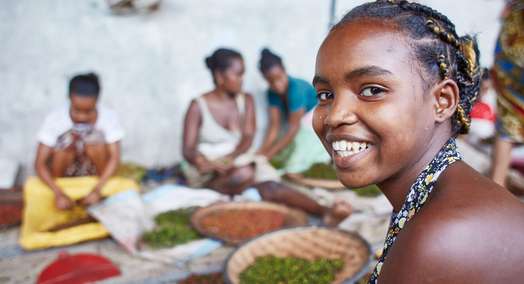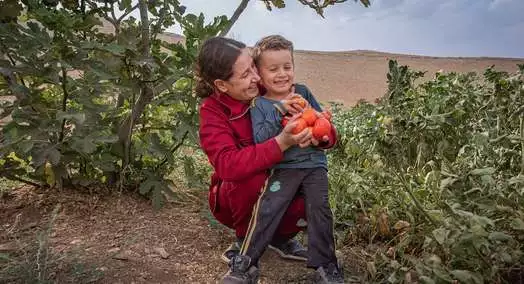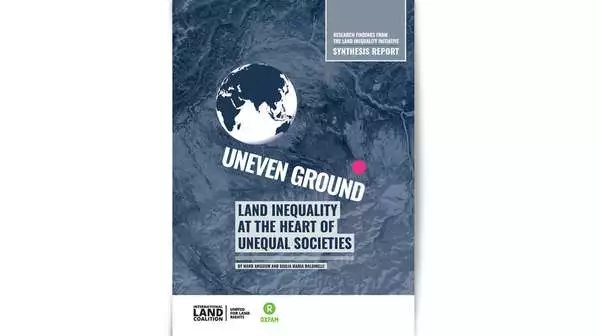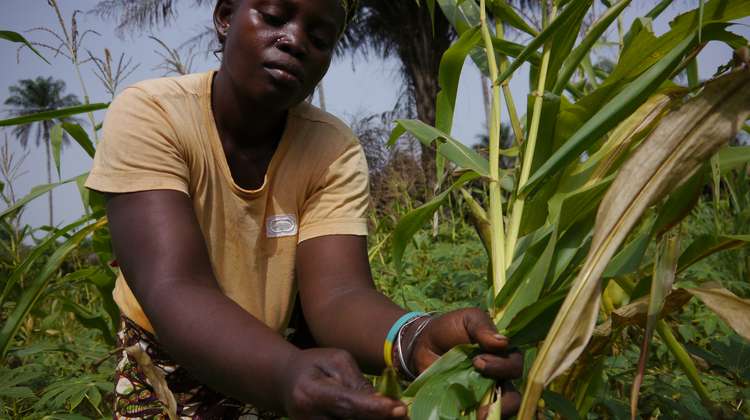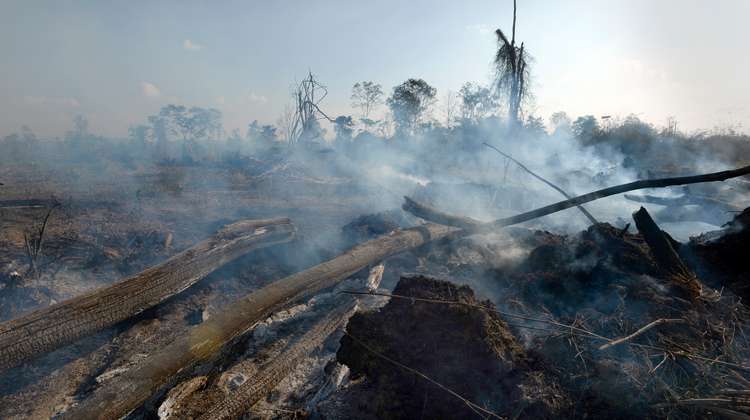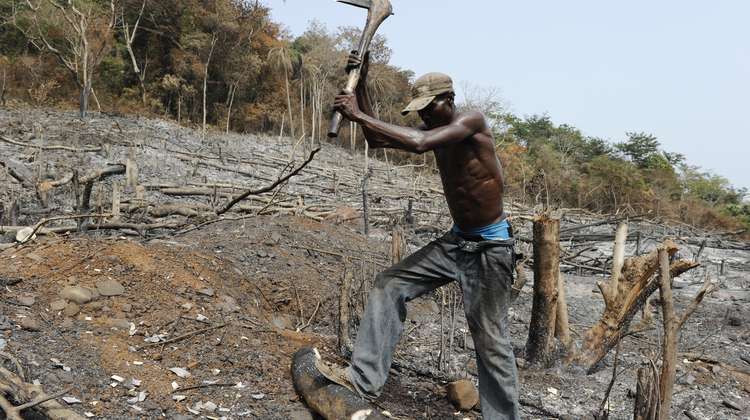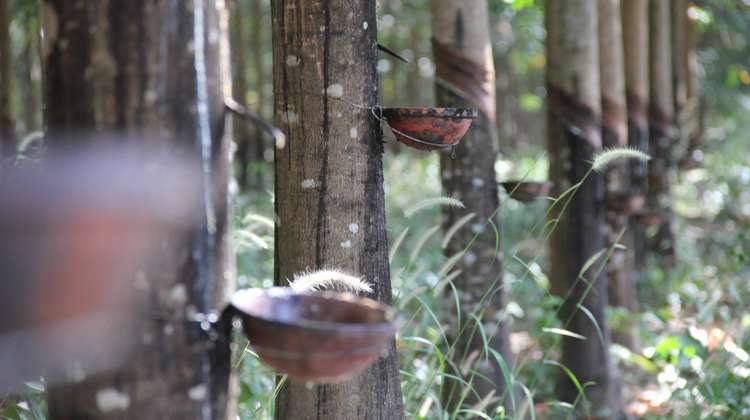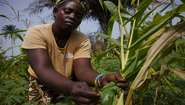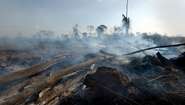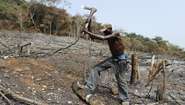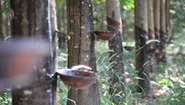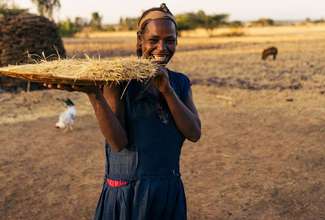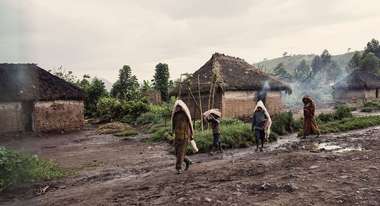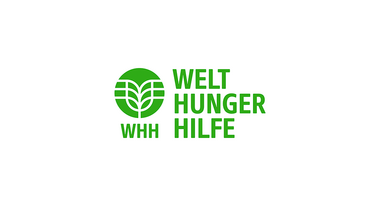The new analyses published in the "Global Land Inequality Report" show that land inequality is significantly higher than assumed.
The Gap with Land Ownership Is Widening Around the World
Welthungerhilfe and Oxfam Present “Global Land Inequality Report”.
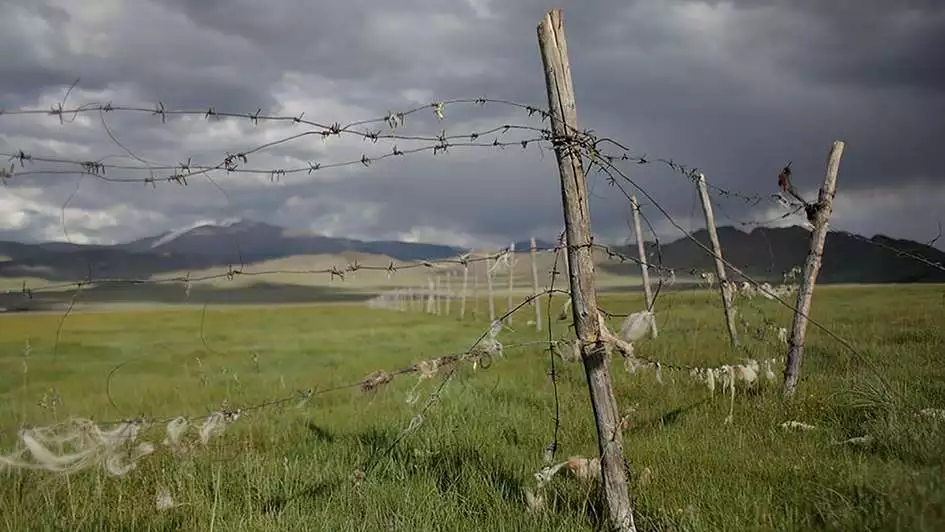
Bonn, 2020-11-24. Land ownership around the world is becoming increasingly concentrated in fewer hands. Small-scale farmers, indigenous people, and particularly women, have been overlooked, although their livelihoods depend on access to the land. “Uneven Ground: Land Inequality at the Heart of Unequal Societies” was published today by the International Land Coalition – of which Welthungerhilfe and Oxfam are members. This report shows that land inequality has been increasing since the 1980s, and it is currently 41 percent higher than assumed.
The richest 10 percent of the rural population currently controls more than 60 percent of land by value, while the poorest 50 percent hold just over three percent. This means that unequal access to land threatens the livelihood of around 2.5 billion people involved in small-scale agriculture, including 1.4 billion of the world's poorest people around the world, whose livelihood largely depends on farming.
The largest one percent of farming enterprises currently manage more than 70 percent of farmland around the world. At the same time, over 80 percent of farms are run by small-scale farmers. This trend can be observed even in the EU. Less than three percent of farms claim more than half the arable land.
One of the factors responsible for the growing trend of land inequality is the increasing interest among companies and financial actors in investment in farmland. This includes the US company BlackRock, the largest property holder with assets of 7.4 billion US dollars, almost twice the gross domestic product of Germany, which was 4 billion US dollars for 2019. In this way, control and ownership of land is becoming increasingly concentrated and at the same time less transparent.
“Growing inequality in access to land is a driver for hunger and poverty. The earth belongs to us all, there should not be speculation on land. Everyone should be provided with sufficient food, and the environment must be preserved for future generations”, stresses Marion Aberle, Welthungerhilfe Policy Advisor for Land Rights. “For all farmers and agricultural workers around the world, it is essential to have secured land rights and livelihood. Governments have a duty to act in this context. All investors must comply with their human rights due diligence obligations.”
“Land is more unequally distributed than we assumed. A few large landowners hold thousands of hectares of valuable land, while small-scale farming families cannot survive with their one or two hectares, and often starve”, says Marita Wiggerthale, Oxfam Policy Advisor for Global Food Security and Agriculture. “There is also a close link between land inequality, loss of biodiversity, the global health crisis, and the spread of zoonotic diseases. Farming needs to be restructured socially and ecologically; for us to achieve this, the power of the large land owners needs to be broken.”
Welthungerhilfe and Oxfam are members of the International Land Coalition, a network of over 250 organisations around the world that work to strengthen land rights, and to support women, men, and communities, whose livelihoods depend on access to land. You can find more information about the Global Land Inequality Report at www.landcoalition.org and www.unevenground.org.
Press Images
Usage note: Please note that the pictures may only be used in a Welthungerhilfe context and may not be passed on to third parties. Images must bear the credit copyright "Photographer/Welthungerhilfe". No long-term archiving. Please delete pictures after use!
Welthungerhilfe is one of the largest private aid organisations in Germany; politically independent and non-denominational. It is fighting for “Zero Hunger by 2030”. Since it was founded in 1962, more than 9,830 overseas projects in 70 countries have been supported with 3.95 billion euros. Welthungerhilfe works on the principle of empowering people to help themselves: from rapid disaster relief to reconstruction and long-term development cooperation projects with national and international partner organisations.
